Rare Rides Icons: The History of Stutz, Stop and Go Fast (Part VIII)

In our last Stutz entry, we saw the once famed luxury maker resuscitated by an entrepreneurial banker. Still headquartered in Indianapolis, Indiana, the newly renamed Stutz Motor Car of America, Inc. built a neoclassical coupe to excite lovers of polyester, personal luxury, and a mélange of styling cues from the Twenties and Thirties. The company’s first offering was the new Blackhawk, styled in a baroque Pontiac kind of way by Virgil Exner.
We covered the Blackhawk’s exterior styling in our last installment, so this week it’s time to step inside a world of gold, wood, and leather. The Stutz’s interior was hand-assembled by the same artisans at Carrozzeria Padane who spent weeks rubbing coats of paint onto the Blackhawk’s thick steel body. Remember that underneath, the Blackhawk was a second-generation Pontiac Grand Prix (1969-1972), on GM’s mid-size G-body.
The Grand Prix was in a personal luxury mode at the time, and the Pontiac’s interior used a cockpit-style dash where all gauges and buttons were driver-focused. The dashboard protruded outward past the center stack and formed a small partition between the driver and front passenger. Wood trim was limited to a thin strip along the lower edge of the dash, and an even thinner strip on the doors.
The Blackhawk ditched most of the interior design of the Grand Prix. The Stutz is different in almost every possible way inside, particularly in the Blackhawk’s first year with its split windshield. The dash lost any cockpit feel and opted for a flat horizontal design. The dash construction was complicated by the split windshield, which meant defroster vents and the dash pad itself were angled and came to a point in the middle. More complex and worse visibility? Sign me up!
Unlike the hard plastic of the Grand Prix, the Blackhawk’s dash was padded and covered in stitched leather. Gauges were Blackhawk-specific, as the craftsmen at Padane ditched standard GM fare. Supplemental information was provided to the driver via a complete gauge package, with five additional dials that supplemented the speedometer and tach. Text on the gauges was presented in both English and Italian, for those who like the benzina.
Centrally placed in the dash, vertical GM climate control levers were presented, alongside a clock and cigar lighter. Stutz threw out the GM vents and used their own circular design. The dash vents were limited to two (far left and right side), two fewer than the Grand Prix.
The Blackhawk’s center console was much nicer than the Grand Prix and provided a luxuriously padded armrest area for driver and passenger. Window switches were located in the console, instead of on the door. Unchanged was the gearshift, which jutted proudly skyward and represented its Grand Prix heritage. It also looked very out of place.
Both dash and center console offered generous amounts of real wood trim, finished most often in a light-colored (and rare) birdseye maple. Said maple is rare as about one percent of maple trees reflect the birdseye pattern. The wood was presented in a slab across the dash, and an even thicker slab across the door panels.
Trimmed in gold-plated metal, a “Blackhawk” script was written large on the door to remind occupants they were somewhere special. While maple seemed the most popular color in its first year, the Blackhawk was also offered with burled walnut or redwood. But materials weren’t limited to plain old hardwood: The Blackhawk’s trim was 24-carat gold plated, in the Liberace tradition.
Blackhawk implemented its own seat design and did not follow the button tufting of the Grand Prix. Seats were covered in fine Connolly leather hides; thankfully no vinyl was present. The seating surfaces reflected simple bolstering, which was cleaner and rather more modern than what Detroit produced at the time. Dash material was made of the same leather as the seats and was color coordinated.
Customers of the new Blackhawk chose their interior floor and ceiling materials, as both carpet and headliner could be finished in wool, or that ever-popular headliner material – mink. Luxurious headliner furs extended over the rear of the cabin, where no seats were found. In the proud Stutz roadster tradition, the Blackhawk was a two-seater.
Often there was a small liquor cabinet in the back of the Blackhawk, but rear trim did vary to customer preference. Behind the front seats, the large rear parcel shelf environs were finished in Connolly. All surfaces were padded, as the rich leather curved over the intruding rear wheel arches.
Large checked luggage size suitcases were available, also covered in leather and finished in the same color as the Blackhawk’s interior. Said luggage could be duplicated for the trunk area as well, which meant a full set of four large suitcases. The trunk luggage was specially made, and a very awkward five-sided shape: It had to fit around the shape of the spare tire, which intruded into the trunk and was fixed in its position. Likely, a Blackhawk owner was the only person at the airport with pentagon-shaped luggage. The rest of the trunk was padded and finished in the same fine leather (or fur) as the interior. The trunk lid lifted on gas struts to avoid the horrible look of dogleg hinges.
Other nice features of the Blackhawk included automatic lighting controls via Twilight Sentinel from Cadillac, Cadillac’s automatic climate control, and cruise control. The stereo was from Lear Jet and included an eight-track player for your Bee Gees hits. Security was handled via central locking in conjunction with a car alarm. The suspension was air-based and adjustable for driver preference.
With all the wood, leather, liquor, and more than 19 feet of luxury, the Blackhawk required a big power plant. And it had one! Ported from the Grand Prix was its largest 7.5-liter (455 cubic-inch) V8. A Pontiac-designed engine from when GM still did that sort of thing, the 455 was tuned for its Blackhawk usage.
A standard Grand Prix with 455 managed 325 horsepower, but in the Stutz, the engine was massaged to 425 horses. Paired to the standard THM400 three-speed automatic (an epic transmission), the Blackhawk rocketed to 60 in 8.4 seconds. For reference, the Cadillac Eldorado of that year managed 60 in a sluggish 9.4 seconds. A limited-slip differential was standard equipment to help put the power to the road. Not that it mattered to the customer base, but the Blackhawk promised eight miles per gallon in standard usage.
The Blackhawk also introduced a new tire invention at its launch: Run-flats. The tires were developed by Firestone and called LXX. A run-flat was a promising idea at the time, partially because its design meant manufacturers could use a larger rim. And that meant the fitment of larger brake discs was possible. The run-flats also implied the spare wheel (integral to the Blackhawk’s look) was unnecessary.
The Blackhawk was the only car on the market in 1971 to offer run-flat tires. Just as well, as most drivers would’ve avoided the $100 ($722 adj.) per tire the special setup asked. Given their safety promises, the run-flats were key in the Blackhawk’s advertising. Once again, Stutz was the “Safety Stutz,” like it had been in the Twenties.
But much like the safety claim Stutz made when it had unsafe and terrible hydraulic brakes on its cars, there was a problem with the safety of the run-flat. The LXX tires were found to come off the rim on occasion, which caused a big whoopsie while driving. LXX was almost immediately removed from the market, and the run-flat tires idea was abandoned by Firestone. There are a few examples of the LXX tires in existence today.
Though it was quick off the line (except when the tires fell off), the Blackhawk was slow to be built. Between the six-week paint job, bespoke body panels, and painstakingly hand-finished interior, each Blackhawk took over 1,500 hours to complete. Like the Stutz cars of old, the new Blackhawk was for the big money in society and their accompanying finances.
In 1971 the Blackhawk was introduced at an ask of $22,500 ($162,533 adj.). The shocking figure was in a different orbit than other luxury vehicles. For example, a Mercedes-Benz 280SL was $7,469 ($53,953 adj.) in 1971, while a lowly Jaguar XKE was $5,734 ($41,420 adj.). The Blackhawk was more in the league of a Rolls-Royce, but was more expensive than that too. The Rolls-Royce Silver Shadow of 1971 asked a mere $20,200 ($145,919 adj.), and represented good value compared to the Blackhawk. Worth noting, in 1971 the average American home (a tri-level, probably) cost $25,200 ($182,037 adj.).
Given it was the first resurrected model of a long-dead luxury brand, did the aforementioned big players shy away from the Bearcat? Absolutely not, but the customer base was a little different than it was in the Twenties. We’ll pause there for now, see you in Part IX.
[Images: YouTube]

Interested in lots of cars and their various historical contexts. Started writing articles for TTAC in late 2016, when my first posts were QOTDs. From there I started a few new series like Rare Rides, Buy/Drive/Burn, Abandoned History, and most recently Rare Rides Icons. Operating from a home base in Cincinnati, Ohio, a relative auto journalist dead zone. Many of my articles are prompted by something I'll see on social media that sparks my interest and causes me to research. Finding articles and information from the early days of the internet and beyond that covers the little details lost to time: trim packages, color and wheel choices, interior fabrics. Beyond those, I'm fascinated by automotive industry experiments, both failures and successes. Lately I've taken an interest in AI, and generating "what if" type images for car models long dead. Reincarnating a modern Toyota Paseo, Lincoln Mark IX, or Isuzu Trooper through a text prompt is fun. Fun to post them on Twitter too, and watch people overreact. To that end, the social media I use most is Twitter, @CoreyLewis86. I also contribute pieces for Forbes Wheels and Forbes Home.
More by Corey Lewis
Latest Car Reviews
Read moreLatest Product Reviews
Read moreRecent Comments
- Tassos Tim is not that good with colors.The bright "pink" is not pink, but FUCHSIA. Both colors may look good on a woman's sweater, but not on steel panels.
- Tassos While I was a very satisfied owner of a much earlier Accord COupe 5 speed (a 1990 I owned from 1994 to 2016), I don't like the exterior styling of this one so much, in fact the 2017 sedan looks better. Or maybe it sucks in white. The interior of my 1990 was very high quality, this one looks so-so. The 157 k miles were probably easy highway miles. Still, Hondas are not Toyotas, and I remember the same service (like timing belt replacement) back then cost TWICE for an Accord than for a Camry. Add to this that it has the accursed CVT, and it's a no. Not that I am in the market for a cheap econobox anyway.
- 3-On-The-Tree My 2009 C6 corvette in black looks great when it’s all washed and waxed but after driving down my 1.3 mile long dirt road it’s a dust magnet. I like white because dust doesn’t how up easily. Both my current 2021 Tundra and previous 2014 Ford F-150 3.5L Ecobomb are white
- Bd2 Would be sweet on a Telluride.
- Luke42 When will they release a Gladiator 4xe?I don’t care what color it is, but I do care about being able to plug it in.



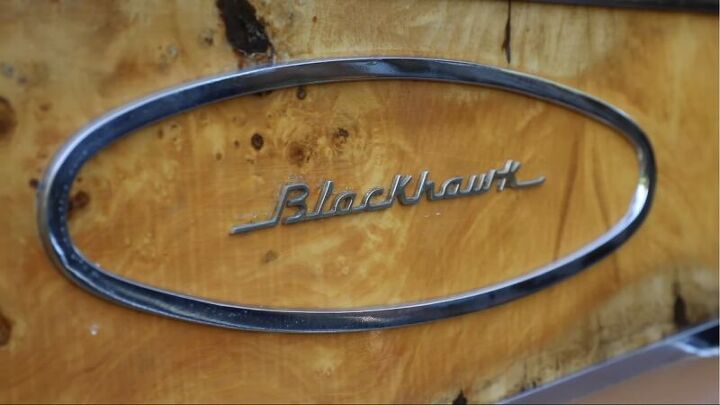























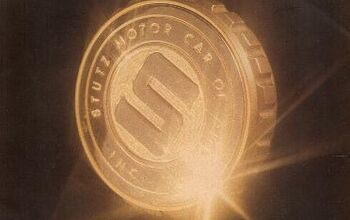
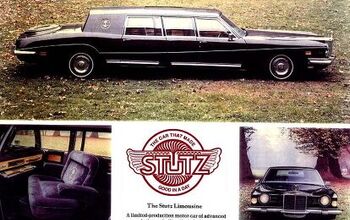

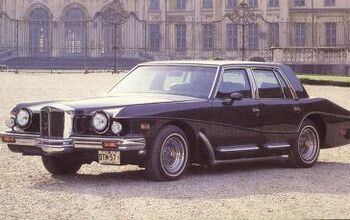
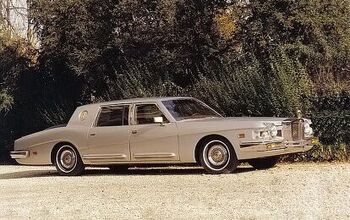










Comments
Join the conversation
I recognize those 'gages'/controls. Firestone also had issues with their 500 Radials from the early/mid 1970's which were subject to a class action lawsuit for 'blowing out' at speed. I had 2 separate incidents in which a tire 'blew' on my nearly new Grand Prix SJ while on the Don Valley Parkway in Toronto, when you could still drive above its posted speed. Suffice to say, I have never driven on Firestones since. https://www.autosafety.org/firestone-500-steel-belted-radials/ https://www.washingtonpost.com/archive/politics/1978/10/24/firestone-sued-over-tires-for-500-million/b5b66123-1ad7-4bb8-9374-1296733bbaa7/
My KIA Niro EV does a sub 7 second 0-60 - is it an uber rocket, or a middling EV. A brave new world. Not as beautiful as this though - file under dry humor. Those classy materials are not aging well - makes an argument for hard plastic and virgin vinyl.